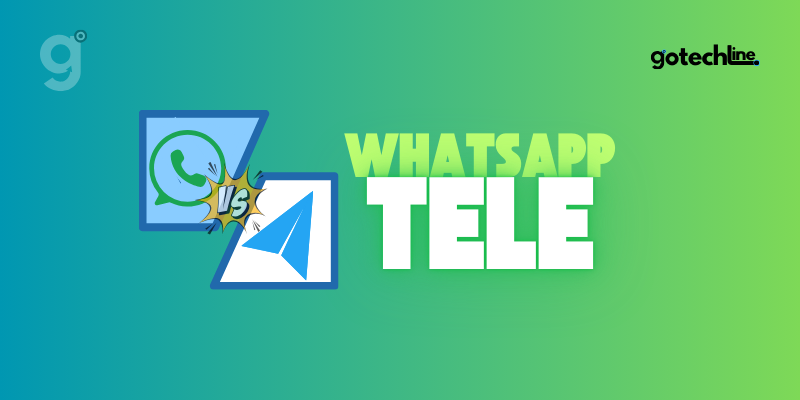In today’s digital communication landscape, both WhatsApp and Telegram are powerful tools for connecting with large audiences through channels. Whether you’re a brand, organization, or community leader, both platforms offer unique features tailored to different engagement needs.
This comprehensive guide explores the key differences between WhatsApp Channels and Telegram Channels, providing insights into their functionalities, user engagement, privacy, and discoverability.
Engagement and Interaction: Exploring Communication Options on WhatsApp and Telegram Channels
One of the most important factors when choosing between WhatsApp and Telegram channels is the interaction model. Both platforms allow for one-way communication from the admin to the audience, but the level of engagement differs significantly.
WhatsApp Channel Interactions
WhatsApp limits interaction to just six basic emojis, which might be sufficient for simple reactions but can feel restrictive for more dynamic conversations. Additionally, WhatsApp channel admins can’t create custom emojis yet, limiting the ability to express emotions or reactions beyond the basics.
Telegram Channel Interactions
On the other hand, Telegram Channels offer far more flexibility in terms of engagement. The platform allows a broad range of emojis for reactions, and admins can hand-pick which emojis are available for use.
This opens up possibilities for more nuanced feedback from the audience. Another feature that sets Telegram apart is the ability to link a group to a channel.
This functionality enables users to comment on individual posts, fostering a sense of community and promoting real-time discussions.
This difference in engagement opportunities is a key reason why Telegram is often the preferred choice for those looking to foster a more interactive, community-driven environment.
Subscribers vs Followers: Understanding the Terminology
A seemingly simple distinction, the terminology used by each platform also plays a role in differentiating WhatsApp and Telegram channels.
- Telegram channels refer to participants as “Subscribers.”
- WhatsApp channels use the term “Followers” for those who join the channel.
While these terms essentially describe the same role—the individuals receiving updates from the channel—the language used can subtly influence the tone and structure of the content.
Telegram’s use of “Subscribers” feels more formal, while WhatsApp’s “Followers” conveys a more casual or social feel.
Privacy of Members and Admins: Ensuring Confidentiality and Anonymity
When it comes to privacy, both WhatsApp and Telegram offer similar protections for both channel members and admins.
WhatsApp Privacy Features
On WhatsApp, members and admins are kept anonymous by default. Only the channel’s name appears alongside messages, ensuring that identities are hidden. However, if a participant adds the admin to their contacts, the admin’s identity may become visible.
Telegram Privacy Features
Telegram also maintains privacy by not revealing the identities of participants.
However, Telegram provides an optional feature where admins can choose to display their name in messages.
This feature is handy for admins who want to be visible to their subscribers while still retaining control over their privacy.
Both platforms excel in protecting user identity, which makes them suitable for sensitive communications where privacy is a top priority.
Visibility in the App: Where Channels Appear and How to Discover Them
A crucial difference in the user experience is how channels are displayed and discovered within the app. Both platforms have different strategies for making channels accessible.
WhatsApp Channel Visibility
WhatsApp features a dedicated “Channels” section under the “Updates” tab. This section allows users to easily explore and discover both the channels they follow and potential new channels.
WhatsApp’s user-friendly interface enhances discoverability, making it easier for subscribers to find content aligned with their interests.
Telegram Channel Visibility
Unlike WhatsApp, Telegram lacks a dedicated area for easy channel exploration. Channels are found under the “All Chats” section, making it harder for new users to stumble upon them unless they already know the name of the channel.
This limited visibility can be a disadvantage for new channels trying to grow their audience.
Discovering Channels: Search Features and Filter Options
The ability to search for and discover channels is another area where WhatsApp and Telegram differ significantly.
WhatsApp Channel Discovery
WhatsApp provides a “Find Channels” section within the Channels tab. This feature allows users to search for channels by name and, more impressively, filter channels by country.
The location-based filter makes it easier for users to find content that is relevant to their geographic region.
Telegram Channel Discovery
Telegram doesn’t provide a specific space for discovering channels. Instead, users can search for channels by name using the app’s search bar.
While effective, this method lacks the intuitiveness of WhatsApp’s more robust search and filtering options.
View Counters: Tracking Channel Engagement
Another major difference is how each platform tracks and displays viewership.
WhatsApp View Counters
WhatsApp does not show a view counter on channel messages. However, channel admins have access to insights about post views, but followers are not privy to this data.
Telegram View Counters
Telegram offers a transparent view counter under each message, visible to all subscribers. This feature provides admins and subscribers with immediate feedback on how well content is performing, creating a more engaging environment.
Admin Management: Flexibility in Admin Roles
The number of admins allowed in a channel can affect how easily a channel is managed, particularly for larger teams.
WhatsApp Admin Management
WhatsApp limits channels to a single admin, which can be restrictive for teams or organizations managing a large-scale channel.
Telegram Admin Management
Telegram, on the other hand, allows for multiple admins to manage a channel. This flexibility is beneficial for collaborative environments where multiple individuals need to contribute to the content management process.
Message Lifetime: Retaining Content for Subscribers
Both platforms ensure that messages remain in the channel until deleted by the admin.
Whether you are running a WhatsApp or Telegram channel, the content you share stays accessible until action is taken to remove it.
Notification Features: Customization and Control
WhatsApp and Telegram also differ in how they handle notifications.
WhatsApp Notifications
By default, WhatsApp channels are muted when you first join. To receive notifications, users need to manually unmute the channel.
This feature allows users to control the notifications they receive but might lead to missed updates if not managed carefully.
Telegram Notifications
Telegram, however, does not mute channels by default. Users can choose to mute channels if they prefer fewer notifications.
Additionally, Telegram offers a unique feature where admins can send “silent messages,” which don’t trigger notifications on the subscribers’ devices.
This helps manage the flow of information without overwhelming followers.
Common Features of WhatsApp and Telegram Channels
Despite their differences, both platforms share some core functionalities that make them similar in certain aspects:
- Content Variety: Both WhatsApp and Telegram support a wide range of content, including text, images, videos, links, polls, and stickers.
- Unlimited Participants: Both platforms allow an unlimited number of participants in a channel, making them suitable for large audiences.
- Private and Public Options: Both offer the ability to create private or public channels, giving admins control over who can join.
- Message Forwarding: Any message forwarded from a channel will include the channel’s name and link, ensuring the original source is credited.
Conclusion: Which Platform Is Right for You?
When choosing between WhatsApp channels and Telegram channels, consider the level of engagement you want, the ease of management, and the privacy needs of your community.
Telegram offers more flexibility and options for larger, more interactive communities, while WhatsApp provides a more streamlined, simpler experience.
Both platforms excel in their own ways, but your choice depends on the specific needs of your channel and audience.
Whether you prioritize interactive features or simple usability, understanding the nuances of each platform will help you make an informed decision and optimize your channel growth.


